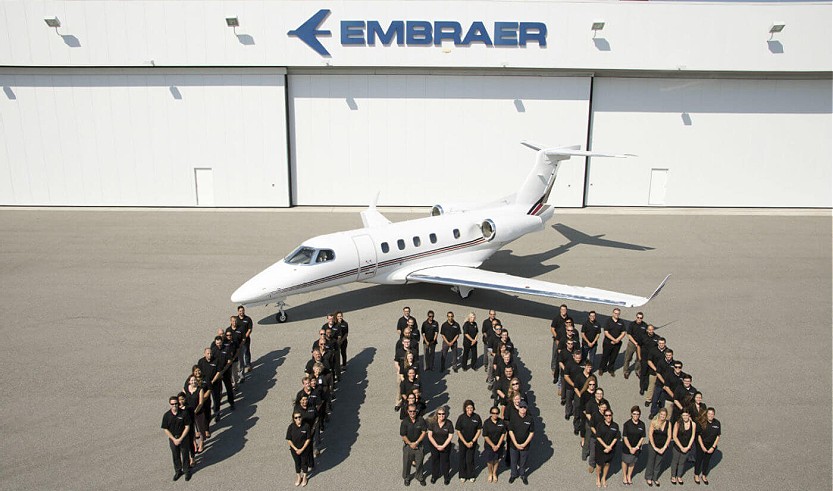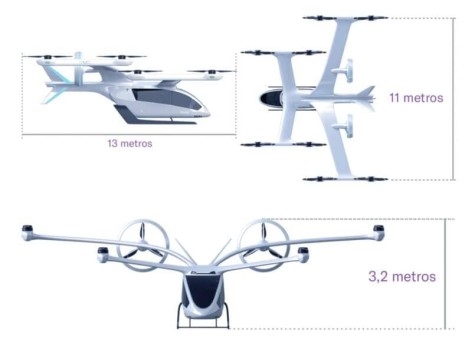A Brazilian Star Shines in American Skies: Embraer’s Rise in the Global Aviation Market
A Brazilian Star Shines in American Skies: Embraer’s Rise in the Global Aviation Market. This article explores Embraer’s trajectory, capital diversification, technological advancements, strategic benchmarking, and its promising future with eVTOL technology.
Everton Faustino
4/18/20254 min leer


Embraer, one of Brazil’s greatest industrial success stories, has solidified itself as a global powerhouse in commercial, executive, and military aviation. Since its founding in 1969, the company has been a symbol of innovation and competitiveness, carving a place for itself in the highly demanding U.S. market.
Embraer’s Origins: A Vision That Took Flight
Embraer was born from Brazil’s ambition to establish itself as an aviation leader. Founded under government initiative and spearheaded by engineer Ozires Silva, the company launched the Bandeirante, its first commercial aircraft, designed to serve regional aviation demands. From humble beginnings, Embraer expanded rapidly, earning global recognition.
Today, Embraer employs approximately 18,500 professionals worldwide, with its headquarters in São José dos Campos, São Paulo. The company operates in ten Brazilian cities and 17 countries, including strategic units in the U.S., Portugal, and China. Its management philosophy is rooted in innovation, operational excellence, and sustainability, constantly refining its processes and expanding global influence. The Brazilian government retains a special “golden share,” allowing strategic oversight of the company’s direction.
Capital Diversification: From Privatization to Global Expansion
Embraer transitioned to private ownership in 1994, enabling greater financial flexibility and international expansion. Today, its shares are traded on the São Paulo Stock Exchange (B3) and the New York Stock Exchange (NYSE), attracting global investors. The company has also established joint ventures in Portugal and China, further strengthening its competitive reach.
One of the most notable acquisition attempts came from Boeing, which announced a 2018 deal to acquire Embraer’s commercial division. However, in 2020, Boeing abruptly canceled the merger, citing economic uncertainties.
Beyond Boeing, Embraer has also drawn interest from Chinese firms, especially amid the intensifying U.S.-China trade war, which could strategically benefit the Brazilian manufacturer.
Technological Innovation: The Driving Force Behind Success
Embraer’s commitment to research and development has resulted in highly efficient, state-of-the-art aircraft. Its E-Jet E2 series integrates next-generation aerodynamics and fuel-saving engines, reducing emissions and operational costs. Embraer continuously applies benchmarking strategies by analyzing industry giants like Boeing and Airbus, refining its production methodologies.
Competitiveness & Market Positioning: How Embraer Stands Out
Embraer dominates the up-to-130-seat aircraft market, competing directly with European and American manufacturers. Its unique advantage lies in operational efficiency, offering lower maintenance costs and superior fuel economy. By strategically adapting its manufacturing and engineering practices, Embraer remains agile in responding to evolving market demands.
Safety and reliability are core components of Embraer’s appeal. Its E-Jet series has earned praise for advanced engineering, fuel efficiency, and a strong safety record. With 38 aircraft models ranging from commercial jets to military planes, Embraer’s commitment to stringent international standards and continuous technological innovation has cemented its reputation as a trusted aviation brand worldwide.
Dominance in the U.S. Market: A Brazilian Sky Presence
The United States is Embraer’s primary international market, with over 1,400 aircraft in operation across American skies. Major airlines like American Airlines, Delta, and United rely on Embraer’s jets for regional operations, recognizing their efficiency, reliability, and cost-effectiveness.
Additionally, Embraer’s executive aviation division is thriving—its Phenom 300 consistently ranks among the best-selling private jets worldwide, making it a preferred choice for high-net-worth individuals and corporate fleets.
Embraer’s eVTOL: The Future of Urban Air Mobility
Embraer is revolutionizing urban transportation with its eVTOL (Electric Vertical Take-Off and Landing) aircraft, developed under its subsidiary Eve Air Mobility. This cutting-edge technology is set to transform urban mobility, providing a sustainable, efficient alternative for short-range air travel.
The Role of eVTOL: Key Use Cases
Embraer’s eVTOL serves multiple functions, including:
Urban air transit – Reducing congestion in megacities with rapid airborne travel.
Airport connections – Streamlining movement between major travel hubs.
Luxury tourism – Offering scenic travel experiences.
Medical and emergency transport – Providing fast, life-saving medical evacuation services.
Advantages of Embraer’s eVTOL
Eve Air Mobility’s eVTOL project offers revolutionary benefits:
Zero carbon emissions – Fully electric for a sustainable aviation future.
Ultra-low noise levels – Perfect for urban environments.
Reduced operational costs – Cutting expenses on fuel and maintenance.
Advanced safety systems – Autonomous flight capabilities with multiple redundancies.
Technology & Production Timeline
Embraer’s eVTOL integrates leading-edge innovations, including:
Electric propulsion – Twin electric motors for enhanced efficiency.
100 km range – Optimized for short-distance urban travel.
Aerodynamic design – Engineered for optimal stability and safety.
Autonomous navigation – Reducing pilot training complexities.
The company plans to begin eVTOL production in 2026, with commercial operations launching that same year. Already, 2,800 pre-orders have been placed by 28 clients across 9 countries, with projected revenues exceeding $14 billion. In a recent São Paulo demonstration, the eVTOL proved its capability by completing a 13-minute aerial journey between Avenida Faria Lima and São Paulo’s Guarulhos Airport—a trip that typically takes over an hour by car.


Conclusion: Embraer’s Competitive Edge in the Global Market
Embraer has firmly established itself as one of the world’s leading aircraft manufacturers, combining innovation, efficiency, and a bold market strategy. Its stronghold in the U.S., coupled with groundbreaking advancements in eVTOL, reinforces its status as a visionary aviation leader. With a promising future and cutting-edge technology, Embraer continues to shine as a Brazilian star in the global skies, elevating Brazil’s reputation on the world stage.
#Embraer #AviationIndustry #BrazilianAircraft #EmbraerEJet #AirMobility #EVTOLTechnology #EmbraerUSA #UrbanAirMobility #AircraftInnovation #EmbraerMarket #AviationFuture #ElectricAircraft #SustainableAviation #EmbraerLeadership #AirplaneManufacturing #EmbraerExpansion #GlobalAerospace #EmbraerCompetitiveness #USAirlineMarket #AerospaceTechnology
